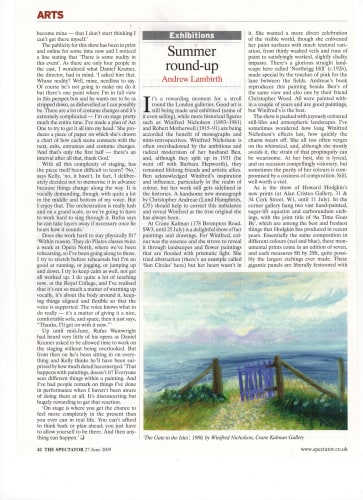It’s a rewarding moment for a stroll round the London galleries. Good art is still being made and exhibited (some of it even selling), while more historical figures such as Winifred Nicholson (1893–1981) and Robert Motherwell (1915–91) are being accorded the benefit of monographs and mini-retrospectives. Winifred Nicholson is often overshadowed by the ambitious and radical modernism of her husband Ben, and, although they split up in 1931 (he went off with Barbara Hepworth), they remained lifelong friends and artistic allies. Ben acknowledged Winifred’s inspiration and influence, particularly in the realm of colour, but her work still gets sidelined in the histories. A handsome new monograph by Christopher Andreae (Lund Humphries, £35) should help to correct this imbalance and reveal Winifred as the true original she has always been.
At Crane Kalman (178 Brompton Road, SW3, until 25 July) is a delightful show of her paintings and drawings. For Winifred, colour was the essence and she strove to reveal it through landscapes and flower paintings that are flooded with prismatic light. She tried abstraction (there’s an example called ‘Sun Circles’ here) but her heart wasn’t in it. She wanted a more direct celebration of the visible world, though she enlivened her paint surfaces with much textural variation, from thinly washed veils and runs of paint to satisfyingly worked, slightly chalky impasto. There’s a glorious straight landscape here called ‘Northrigg Hill’ (c.1926), made special by the touches of pink for the lane between the fields. Andreae’s book reproduces this painting beside Ben’s of the same view and also one by their friend Christopher Wood. All were painted within a couple of years and are good paintings, but Winifred’s is the best.
The show is packed with joyously coloured still-lifes and atmospheric landscapes. I’ve sometimes wondered how long Winifred Nicholson’s effects last, how quickly the charm wears off. She all too often verges on the whimsical, and, although she mostly avoids it, the strain of that propinquity can be wearisome. At her best, she is lyrical, and on occasion compellingly visionary, but sometimes the purity of her colours is compromised by a cosiness of composition. Still, well worth a visit.
All Rights The Spectator

